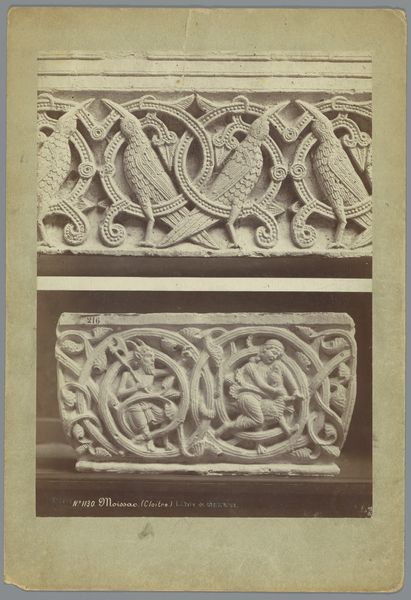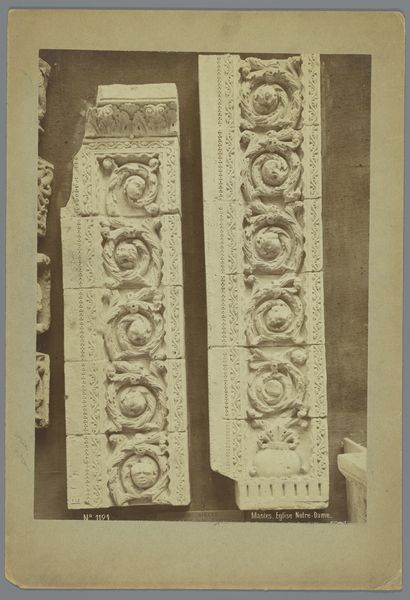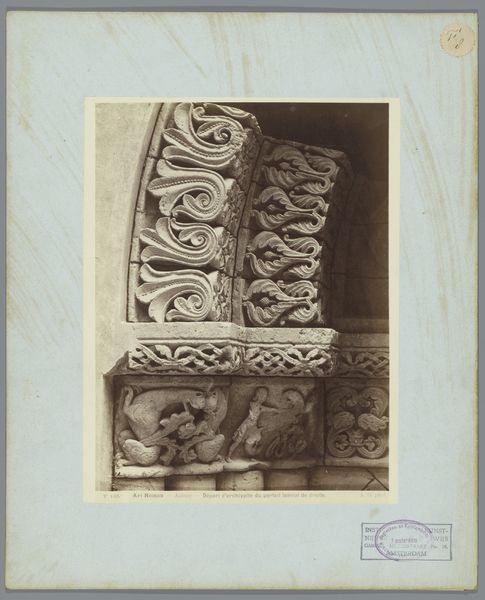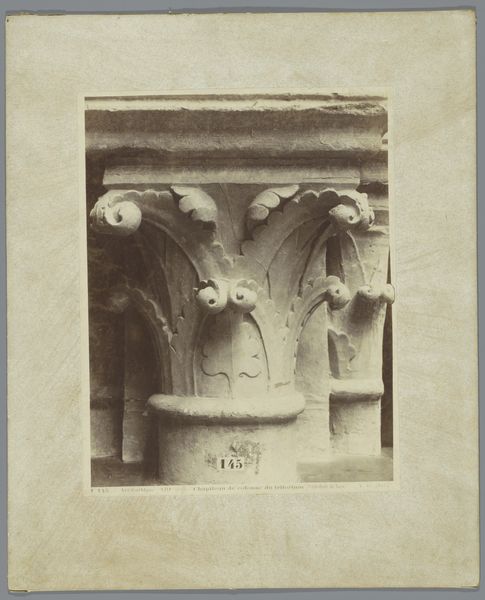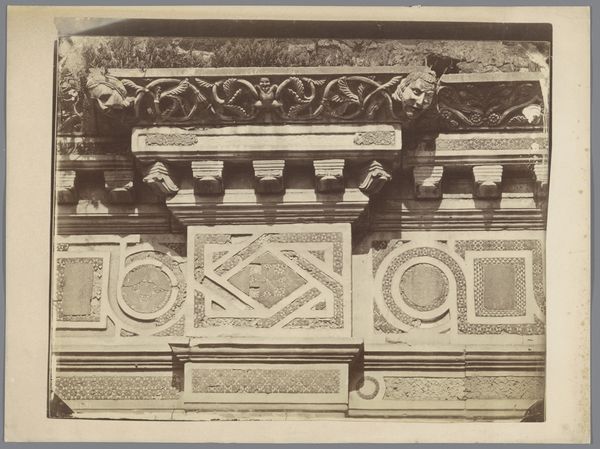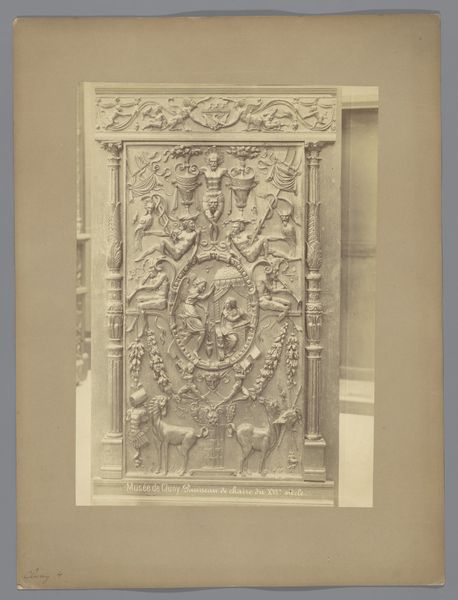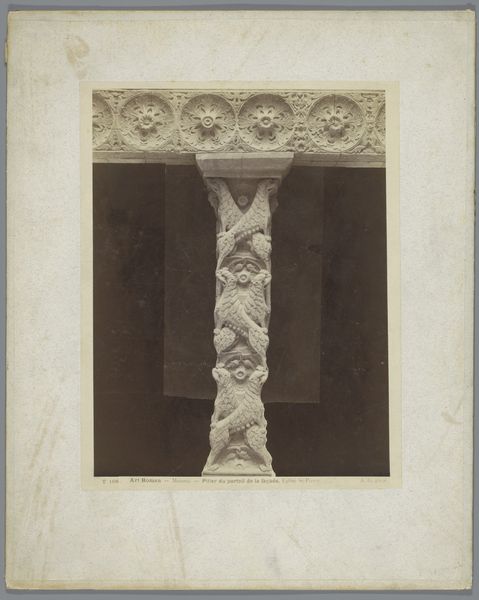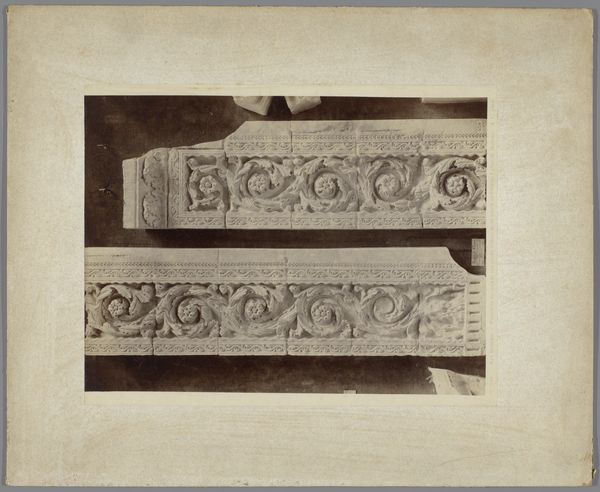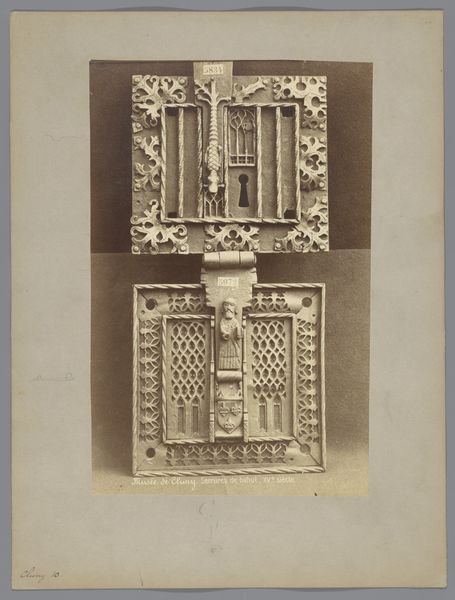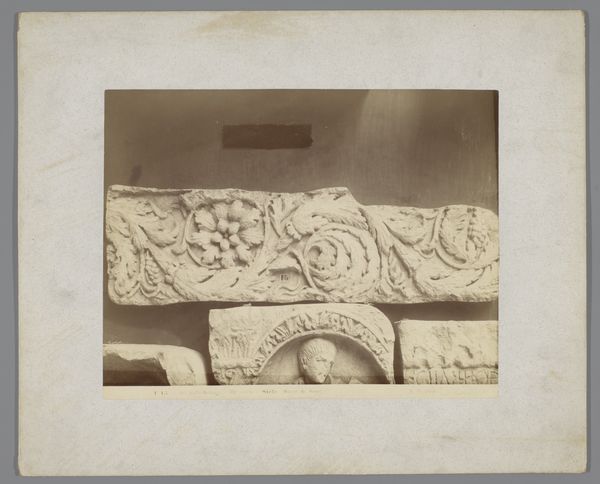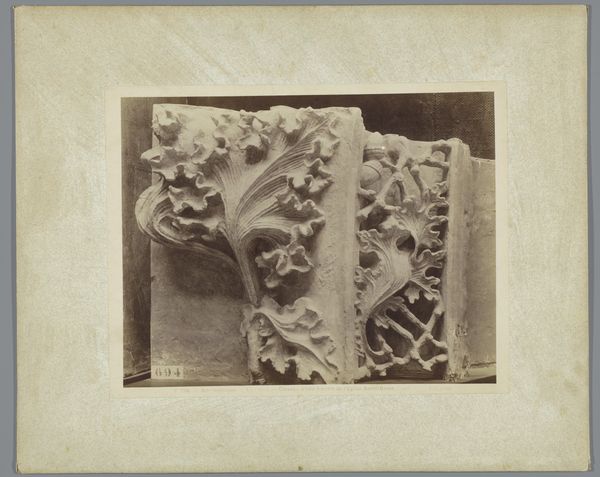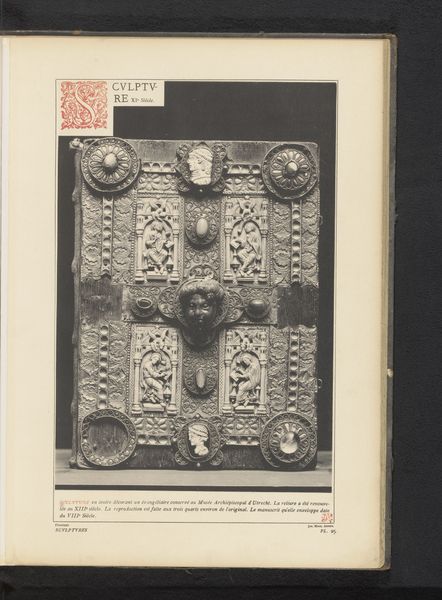
Kapiteel van de kathedraal de Notre-Dame te Rouen c. 1875 - 1900
0:00
0:00
photography, gelatin-silver-print
#
form
#
photography
#
geometric
#
ancient-mediterranean
#
gelatin-silver-print
#
line
Dimensions: height 369 mm, width 265 mm
Copyright: Rijks Museum: Open Domain
Editor: Here we have a gelatin-silver print titled *Kapiteel van de kathedraal de Notre-Dame te Rouen* by Médéric Mieusement, dating roughly from 1875 to 1900. The contrast and textures captured in this close-up of architectural details are just captivating. What historical insights can you offer? Curator: This photograph speaks volumes about 19th-century interests in historical preservation and documentation. Photography offered a new, seemingly objective way to record architectural details like this capital. Consider how this image might have been used - not just as an art object, but also as a tool for architects, historians, or even the clergy. Editor: That’s fascinating. It makes me wonder about its wider circulation and who would have seen it back then. What about the choice to focus on these specific decorative elements? Curator: Precisely! The selection of such ornate details reflects Victorian-era aesthetic values, wouldn't you agree? The emphasis on intricate geometric forms and vegetal motifs aligns with broader trends of romanticizing the medieval period. Do you see any echoes of the Gothic Revival movement here? Editor: Now that you mention it, the stylized foliage does have that handcrafted feel that was being re-embraced then. But taking photographs, cataloging these architectural remnants... Wasn't it also kind of a power move to claim ownership of history and knowledge, especially for the elite? Curator: Absolutely! Photography, as a medium, was not neutral. Think of it in terms of institutional authority. Museums and archives acquired such images, shaping a particular narrative of French national identity, centered on architectural grandeur and historical depth. It raises a question, doesn't it, about the politics of representation? Who gets to define 'history,' and through what means? Editor: That’s something I’ll definitely be pondering. It’s more than just a pretty picture; it’s a document of cultural values and historical interpretation. Curator: Exactly! Next time you see an old architectural photograph, ask yourself: Whose story is it telling, and for what purpose?
Comments
No comments
Be the first to comment and join the conversation on the ultimate creative platform.
